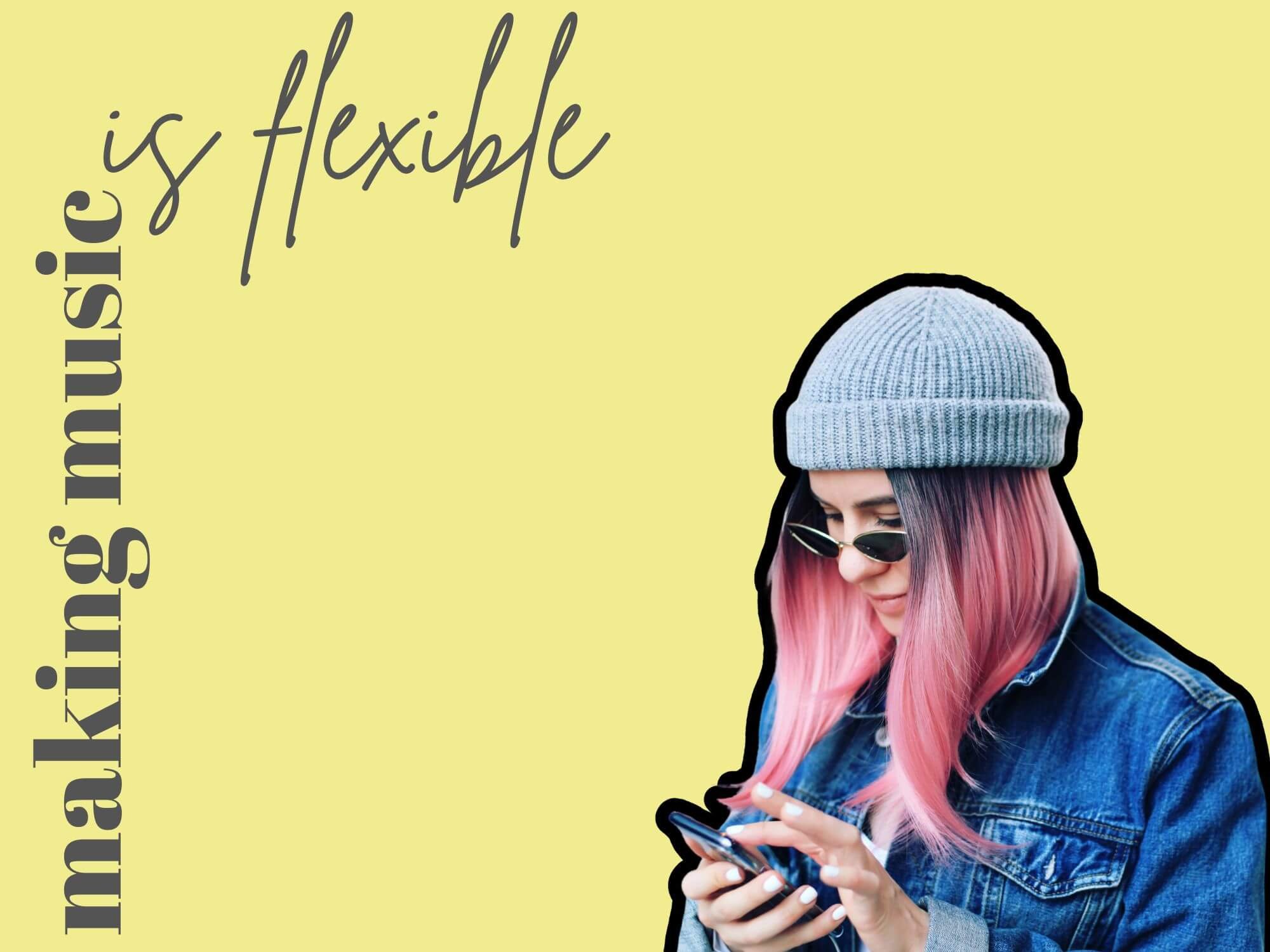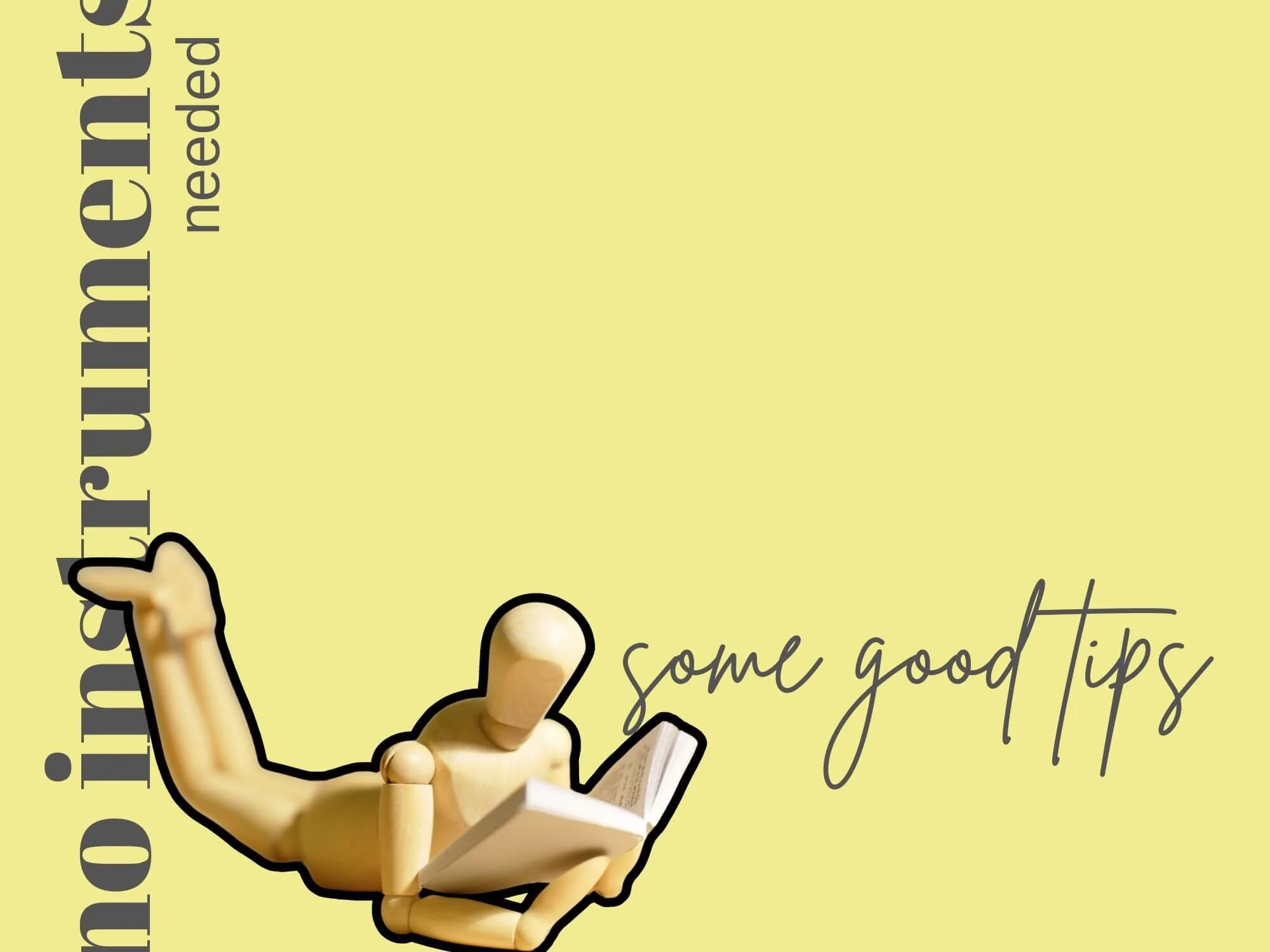How to Make Music Without Instruments (7 moves)
Psst, you can make music without instruments. It’s creative play and an epic way to understand what music means, boost your musical chops and explore your artistic expression.
All you technically need to make music without instruments is a laptop (or really, just your phone is good enough).
Plus, it’s pretty normal these days to write full songs without ever touching a traditional instrument, especially for genres like EDM.
So this post shares some of my favorite ways to make music without instruments.
But notice that I do not currently recommend using AI (for songwriting):
*AI DISCLAIMER (/rant)
There are too many questions and a lot of unethical sh*t going on with AI right now.
And I don’t just mean the environmental stuff.
I’m talking about how AI companies are basically stealing other artist’s work without their permission and no compensation to train their data on. So if you’re keen to just hop into Suno and write a prompt that spits out music trained by real artists, then maybe this post isn’t for you. Because this might cause some heat, but that’s not making music (and that’s the goal of this post, to make music without instruments).
I want you to dive into the real songwriting process.
Get dirty, frustrated and experience the joy of stumbling onto a random sequence of notes or sounds so you can confidently say, “I went through something and I wrote this.”
I’m not completely anti-AI either though. I think there’s exciting potential for improving artistic workflows and enhancing creative expansion. But it needs time to mature.
I even mention some AI tools in this post. But these are not used for the songwriting process itself (i.e. they’re not replacing the whole songwriting experience itself or stealing artist work so you can call it your own). They’re used for workflow and process improvements.
Eventually, I think AI will be used more for things like sound design, organizing loops or track stacks and creating custom samples and mixing effects. Or even creating custom agents trained on YOUR OWN voice memos and songs, which could then recommend similar melodies or ideas. But I’m not even sure how I feel about that one either. I love the creative process too much (even if it is painful sometimes…but that’s what makes it worth it).
Again, I don’t know enough about AI and it’s still too early for me to confidently recommend these tools. So let’s just bookmark this stuff for another day.
Alright, enough chit chat——let’s do this.
Table of Contents
Hey, just a quick heads up that some links in this post may be affiliate links. This is at no extra cost to you, but helps me keep the lights on. Thanks for your support!
What Is An Instrument, Really?
An instrument is any resource or tool that’s used or manipulated to make sounds with.
Everything from your voice to a train screeching by could be turned into a sound for a song. Put another way, anything can be an instrument. It’s about intention.
In my view, cars, city noises, coffee makers and layered vocal harmonies are all examples of potential instruments.
How you use them is up to you.
Benefits of Not Using Traditional Instruments
Sound different and stand out
Become a more flexible songwriter
Write music anywhere
Discover new sounds and styles
Challenge yourself
Become more creative and innovative
Become a more versatile musician
How to Make Music Without Instruments (7 moves)
1. Use Your Phone
Your phone is an instrument waiting to be unleashed. Apps make this possible, of which two come to mind:
BandLab is awesome for organizing ideas. But it also has a music production interface with a digital drum pad, sound libraries and tools for recording straight into your phone.
They even have an AI tool (SongStarter) to generate royalty-free ideas.
Plus, you can share your stuff publicly with BandLab, earn royalties and build a following through the app — it’s sort of social.
As for Demo, this is a new app I recently stumbled across. It looks like a solid place to quickly jot down ideas and to put together the shell of a song (without touching any instruments or MIDI).
But new apps are always popping up, so I’ll keep this list updated as I discover new ones worth sharing.
2. Get A DAW
A DAW is a digital audio workspace. It’s the modern software musicians use for making music. Basically, it puts a music studio inside your computer.
Most DAWs come with a variety of virtual instruments, sounds and effects. And you can amazing music without ever touching a traditional instrument.
So if you’re a serious about making music with just a laptop, consider investing in a DAW.
I use Logic Pro. But there are plenty more options:
GarageBand (basic version of Logic)
Reaper
Cubase
Ableton Live (especially good for EDM/live sets)
Pro Tools
Cakewalk by BandLab
Keep in mind that you’ll need to learn how to produce music, which is a long process if you’re new to music.
But start simple and small and don’t try to learn every trick or strategy at once. Start by learning how to make a simple song with just piano, light drums and maybe a synth pad in the background.
As you get faster and more confident, start adding more layers and learning advanced moves like frequency distribution, panning and ear candy.
3. Use Samples, Software + Libraries
Why start from scratch when you can use prerecorded or prebuilt instruments and templates? For example, you can use:
Samples. Borrow, manipulate and reuse parts of songs. This is common for DJs.
Sound libraries. These are collections of sounds and instruments — with everything you can imagine.
Chord software or packs. These are prerecorded progressions or software tools you can use to write songs with.
By the way, this isn’t cheating. It’s modern music-making and (most) everyone uses these tools in some way or another.
Choosing the right sounds and manipulating them in clever ways is the creative part. So play around, have some fun and see what happens.
Here are some tools I like:
Arcade by Output
The “ultimate sampler and instrument plugin”
AI mastering, plugins, distribution, samples, courses and more
A huge library of sounds, loops, instruments and tools
Caption Chords by Mixed In Key
Write epic chord progressions like a pro
Lots of presets, plugins and sample packs to choose from
A collection of tasty samples and loops
A vast library of free samples and loops
Explore more:
➤ Is LANDR Any Good? (my review)
4. Use Your Voice
Ask any singer, your voice is an instrument. So let’s use it to make music.
For example:
Use vocal harmonies
Turn your voice into instruments with plugins (like a bitcrusher)
Make drum beats with your voice
Use software like Vochlea (more on this below)
If you’re stuck on how to use your voice for music-making, it helps to find some inspiration. Jon Bellion is one example. He’s super creative with beat boxing and unique production techniques.
But just remember your voice alone is a powerful instrument.
And coupled with some tools and intention (like plugins, creativity and a DAW), it’s unstoppable.
5. Try These Apps
There are two apps for making music without instruments I’m currently stoked on:
Vochlea’s Dubler converts your voice into drums or instruments. This is super intuitive and super exciting.
And Life by XLN Audio takes any sound or audio clip and chops it up into a unique beat, which you can then sample or further finesse in your DAW.
You get tons of customization options and the app connects directly from your phone into your DAW.
Suffice to say, I’m stoked on these apps. They take songwriting creativity and efficiency to the next level.
6. Use Sounds From the Environment
Music is all around us. Everything is a potential melody or sound clip.
Cars driving by, birds chirping, a busy bar, leaves rustling in the wind — it’s all music. Turning your world into music is an epic creative project that’s just waiting to be made.
For example, I sometimes use sounds from my travels in my music. Trains, people talking, general city life, planes taking off — these are all fair game for songwriting.
So go out and explore your environment. Pay attention to the sounds and look for ones that pop out to you.
Capture it, make some notes and hop into your computer later to adjust the pitch or add effects to it.
The world is your studio.
Tip: Delete background noise with a noise gate plugin (*the cleaner the source sound, the better).
7. Use Everyday Items
Everything around you is a potential instrument. Any sound can be manipulated or tweaked into doing your musical bidding.
For example:
Rub any two things together
Use pots and pans for drums
Shake a match box
Scratch a couch
Crush a can
Record the water from your faucet
The list goes on forever.
Once you capture a sound, you can edit it by adding effects and other production techniques.
The only limit here is your imagination. So get weird and have fun with it.
Later ✌️
Learning to make music without instruments is fun, creative and normal.
But it’s also a new skill, so don’t expect immediate magic. But as long as you don’t quit, success is inevitable.
So keep at it, test things out and get weird with it.


